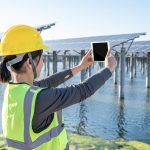Supply chains for heavy equipment are under pressure globally. Delays, rising costs, and component shortages are making it hard for Australia’s construction sector to access the machinery it needs, when it needs it. Tariff tantrums, weakening Australian dollar and geopolitical conflicts are all exacerbating the shortfall and making sourcing more difficult. In such testing times, any positive effort to assuage the crises can be a real booster for the industry.
The challenge is magnified by the complexity of heavy equipment manufacturing itself. Each excavator, crane, or loader relies on thousands of interdependent parts which all come together to form a robust and reliable piece of equipment.
Production depends on highly specialized suppliers and sophisticated assembly lines that take months or even years to recalibrate when supply is disrupted. Any break in this global chain can ripple across the entire industry.
In such testing times, any positive effort to ease these bottlenecks and increase local access to equipment can be a genuine boost for Australia’s infrastructure and industrial growth.
Zoomlion’s Quest For Innovation
On May 11, Zoomlion also held its “Technology Fuels the New Era” event at Zoomlion Smart City in Changsha. The event welcomed thousands of visitors from China and overseas, including industry leaders, partners and the media. The star of the show was the company’s new excavator manufacturing facility, where robots, AI systems and automated guided vehicles work together from material preparation to final assembly. The factory can reportedly astonishingly produce one excavator every six minutes, showing just how far automation has come in heavy equipment manufacturing.
Spanning more than 100,000 square meters, the event showcased over 500 advanced machines and innovative breakthroughs, including the world’s most powerful all-terrain crane and a range of new energy products. By the end of the first day, Zoomlion had already secured more than RMB 4.6 billion in orders. It was not a mere marketing stunt, as the event was a showcase of true innovation and advancement.

The company showcased how digital twins, predictive analytics and industrial robotics come together to make operations more efficient and adaptive. In practical terms, this means production lines that can simulate and test new designs virtually before a single part is built, automated systems that predict maintenance needs before breakdowns occur and guided vehicles that move components through the factory floor without manual input. The precision and automation on display, such as AI-assisted welding and assembly robots capable of adjusting in real time, drastically reduce errors, material waste and downtime. Zoomlion also highlighted how its factories integrate sustainability into design, optimising energy use and minimising emissions through smart scheduling and process control. For an industry grappling with delays globally, such R&D can be a real gamechanger.
Zoomlion Comes To Australia
In late 2024, Zoomlion Australia opened its headquarters in Melbourne, showing strong intent to have local input to solve local problems. This can only be good news for an industry relying on quality imports to contribute around 7% to the GDP and employing more than 1.3 million people in the country. With that local presence, Zoomlion can hope to better manage supply, servicing, parts distribution and support local clients more responsively. Having a local base means less dependency on long international freight, fewer customs delays, and more agility in responding to equipment demands. For Australian contractors and rental companies, that could translate into better access and shorter lead times for buying or leasing heavy machinery. For Zoomlion, it could be the perfect entry time in a lucrative market. A win-win for everyone involved!

Soaring Construction Costs in Australia
Australia’s construction and equipment markets are feeling stress. A recent Aon report found that construction and plant price growth continue to outstrip broader economic cost growth. It seems like supply chain constraints, labour shortages and currency fluctuations are all pushing equipment prices higher than the Consumer Price Index (CPI). Meanwhile, the Australian construction equipment market itself is growing. In 2024, it was valued at AUD 4.39 billion, and analysts expect it to expand at a CAGR of 4.10% through 2034. Increased infrastructure spending, urbanisation and demand from mining also play a role in driving that growth. This means that demand for machinery is rising just when sourcing becomes more complicated.
Another intriguing aspect is the heavy dependence of the sector on imported machinery. Australia spends billions of dollars on importing heavy machinery, with imports surging to approximately $42 billion between late 2020 and early 2022. While a local manufacturing base does exist, it is not capable of fully supporting Australia’s unique and diverse needs on its own. Currency troubles can make this more volatile. That is why, having reliable import partners like Zoomlion becomes increasingly important.
Future Outlook
While the entry of one major global player will not solve all the industry’s woes in one go, it is sure to assuage some supply concerns and improve the lead time. With a local branch in Melbourne, parts logistics could also become faster and more predictable.Onsite technicians and local infrastructure also reduces downtime, which can prove to be very costly on heavy equipment jobs. All things considered, these latest developments could be music to the ears of the key stakeholders of the construction industry in Australia.






